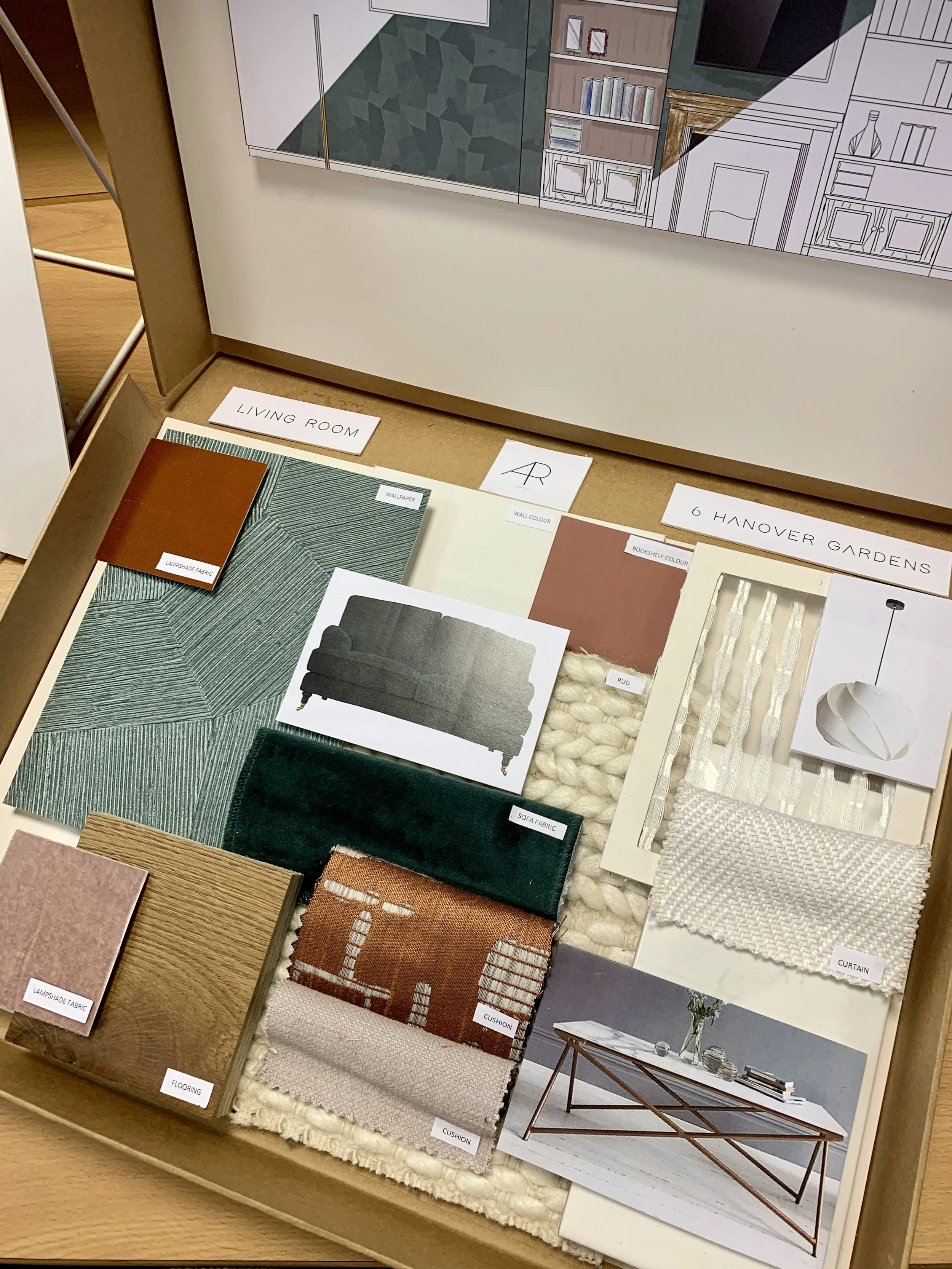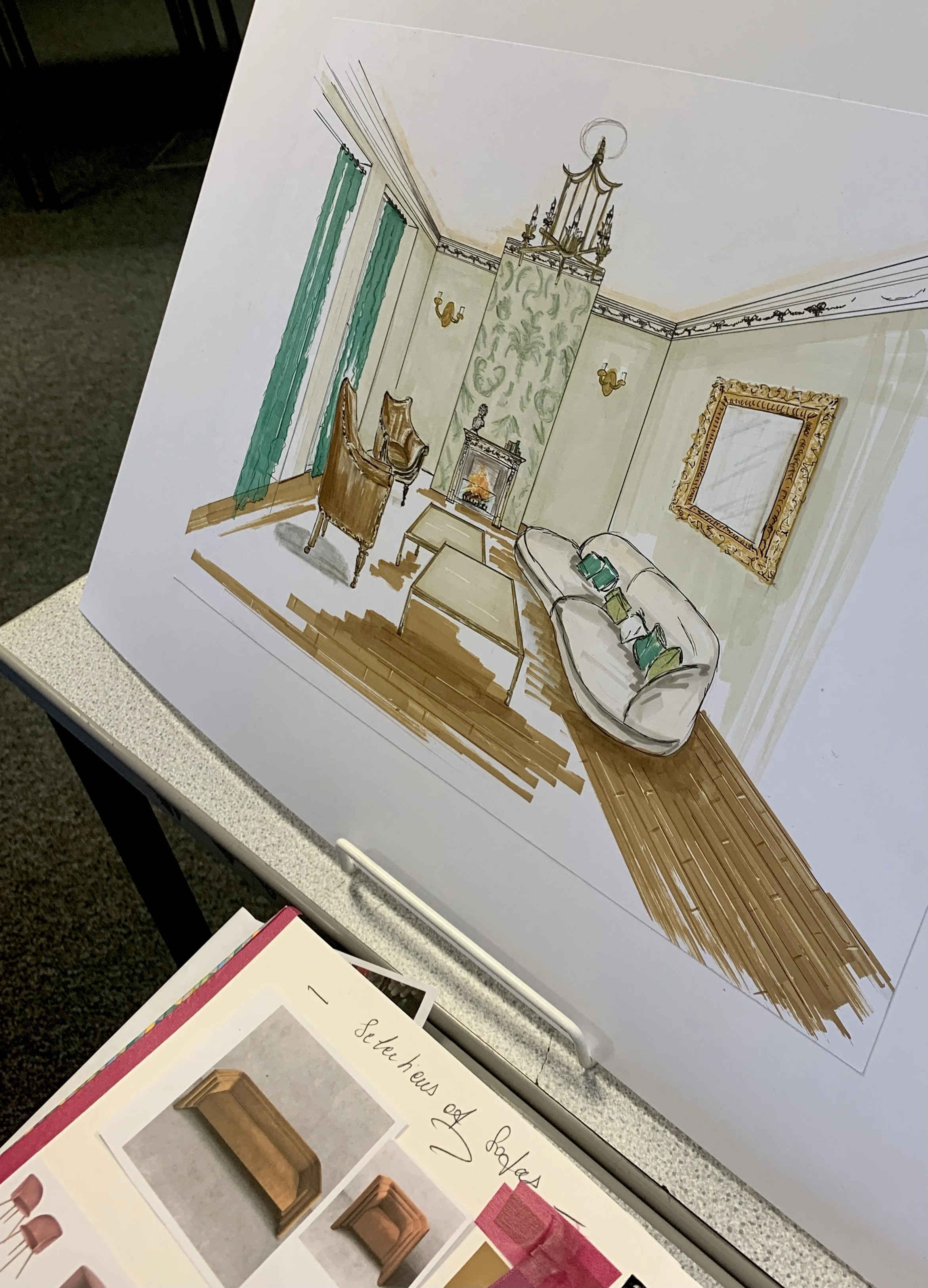Interior Certificate Research

I came away from the interior design taster course with Katie Goring feeling excited, imagining what it would be like to work in interiors full time. After applying for a few roles loosely related to interior design and going for coffee with every and any connection I had within the industry, it became clear that I needed to look into formal training. Enter the research phase…
The Difference Between Interior Architecture and Interior Design
The first thing I got to grips with was the difference between interior architecture and interior design.
In the UK, it is illegal to call yourself an interior architect unless you have had the education, training and experience and are registered with the Architects Registration Board (the statutory regulator of architects).
In contrast, there is no regulator for interior design. Nevertheless, The British Institute of Interior Designers (or The BIID for short) is a professional body that has been awarded institute status by the government to fill this gap. To become a member, there are “rigorous entry requirements which assess training, experience and professionalism”. The BIID also require members “to continue their professional development throughout their career to ensure their continued expertise in design process, practice and regulatory matters” (The BIID). Put simply, you need to meet the highest of standards to become a member, thereby ensuring quality.
Types of Courses
Once I understood the above, I got into the nitty gritty of the different courses on offer.
The BIID states that courses can fall into two main categories:
Those that are nationally accredited by government regulated awarding bodies
Those offered by private training providers.
Irrespective of the provider, the BIID recommend that any course on interior design should cover:
Fundamentals of design
Visual communication
People in their environment
Creative project work
Interpretation of the project schemes and technical studies related to the built environment
Professional practise.
Beyond course provider and content, there will be many other factors that you will have to consider. Personally, I was focused on the quality of teaching, the amount of time I would need to be out of work for and the likelihood of me getting a job pretty soon after training. You might also think about budget, tutors’ qualifications, past employment & style, study support, the type of place you would like to work & whether the course will help you get there, if the course is validated by a university, alumni feedback & employment, the resultant qualification or license - the list goes on.
Ula Burgiel, who worked at the likes of Finchatton and Kelly Hoppen before setting up her own studio, suggests putting these factors into a table and comparing the different courses to really work out whether each is for you.
KLC
With my table complete, KLC seemed like the best option for me.
The courses are arranged like building blocks, meaning there is always the opportunity for further learning and up-skilling. It also seems to be a true to life professional experience, mixing the academic with the practical so that students can locate their learning. What’s more, they have a close relationship with the design industry and practising professionals, ensuring programmes are up to date whilst also giving the opportunity for guest speakers, competitors etc. A final plus is the location - it is ideal for easy access to show rooms and museums in the local vicinity.
I feel like a bit of a sales person here, but to me it really seems like they train you quickly for a reputable design qualification to help you find employment in the residential sector. And the quality of work seems exceptional - it is no surprise that students go on to be very successful.
So, off I went to their open day in mid-November, with my eye on the three month certification, a course which is popular amongst career changes…
After the open day, things moved quite quickly. I had an interview the following week and also signed up to a complementary day course, which was informative, interactive and reassured me this was the right path for me!
Between then and the start of my course, I focused on my (very rusty) sketching skills, building up a sample library, taking photos of everything that interested me, visiting properties for inspiration, reading magazines and getting a top line understanding of programmes such as InDesign, Photoshop, EstiPC and Revit (since these wouldn’t be covered on my course).
There’s definitely a fire in my belly and a real resolve to absorb as much information as possible - something I haven’t had for a while. Stay tuned for how I get on as I learn relevant creative, decorative and technical skills to design kitchens, bathrooms, living and sleeping areas in the home!












